Fish patterns | Reaction-diffusion in nature
Our Reaction show starts in San Francisco in a few days. Throughout the course of the next month, we will be doing a number of posts on the reaction-diffusion system and its scientific and mathematical basis. Today’s post was originally going to be titled “top 5 best tropical fish” …. but who can stop at five… You can find these pictures and more in a gallery I curated on flickr here.
Intricate and colorful, the 2d skin patterns of fish are one of the only examples where we can observe Turing waves in vivo. The skin patterns of some fish change throughout their growth sometimes even into adulthood allowing for the dynamic nature of reaction diffusion to be observed over time. Scientific studies of the emperor angelfish and the zebrafish have given striking evidence that reaction diffusion (or some mathematically analogous process) accounts for the dramatic shifts in pattern that occur over the fish’s lifespan. Here are some striking examples of reaction diffusion patterns in situ.
The juvenile emperor angelfish (left, photo by Doug Anderson) displays a particularly intriguing radiating stripe pattern. This pattern eventually converts to the one you see in the next photo. As the fish grows, the pattern “unzips” along the Y branch points that form to maintain an even distance between stripes. Eventually, this results in an adult fish where the stripes are evenly distributed with no branch points.
The puffer fish below are closely related species, yet they display very different patterns! Since they are closely related, it is likely their patterns have a similar molecular basis. The responsible chemical mechanism must be able to account for the dots, stripes and polygons exhibited. Reaction diffusion systems have just this property; producing dots, stripes, polygons and combinations thereof when given different parameters.
Boundary conditions like the eye of the fish tend to determine stripe directionality. For the Acanthurus lineatus (below left) and the young Arothron mappa (below right) this results in the pattern orienting perpendicular to the boundary. In other fish like this blowfish, the pattern may orient parallel to the eye boundary instead.
Reaction diffusion can also account for more complicated patterns like these. On the left is a Sailfin Tang whose dense dot and stripe pattern overlays a larger macro scale pattern of stripes. On the right a Napoleon Wrasse whose swirling pattern shrinks in scale markedly as it moves away from its eye.
These photos were taken from a diverse group of photographers on flickr, click each image to visit their photostreams. Interested in reading more about reaction diffusion experiments involving fish? I’ll be posting a review of some interesting experiments soon. I also recommend the website of the Kondo lab which has many of their papers available as pdfs.

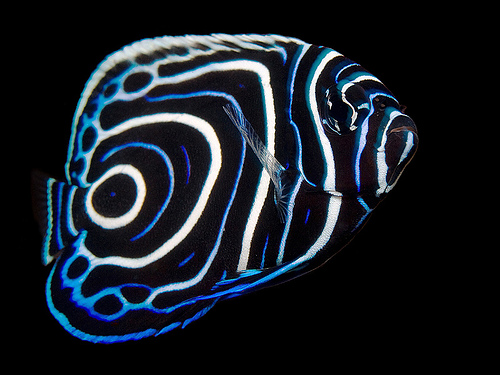
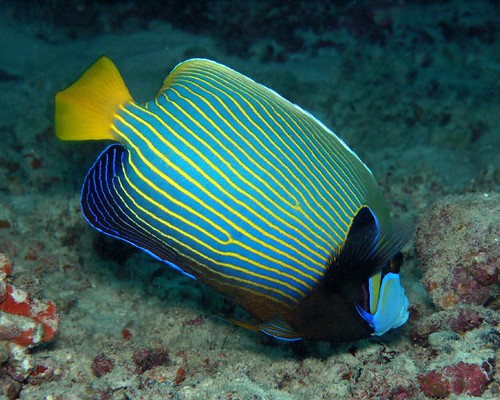
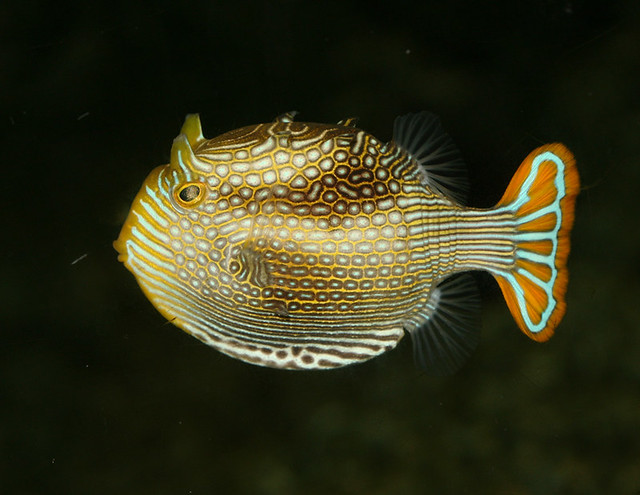
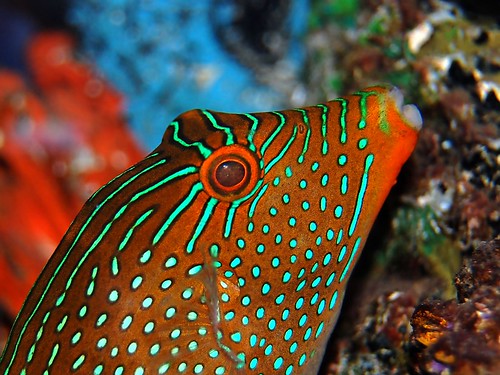
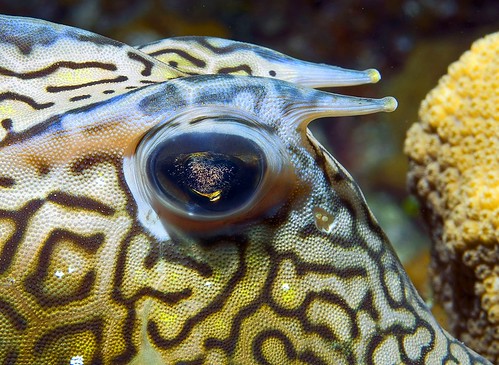
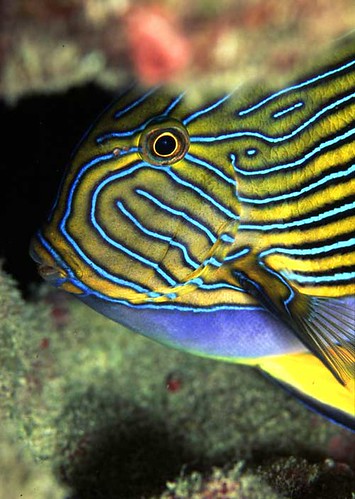
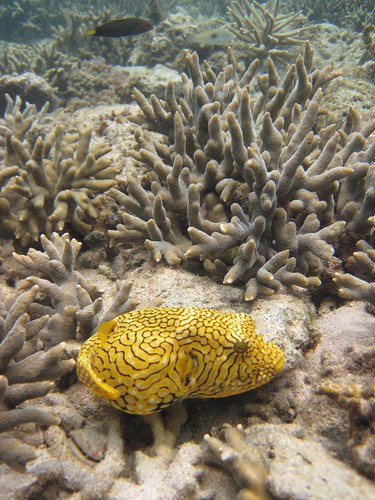
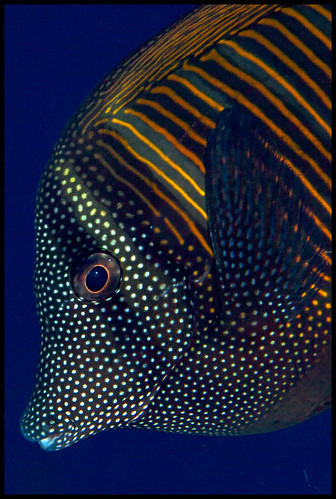
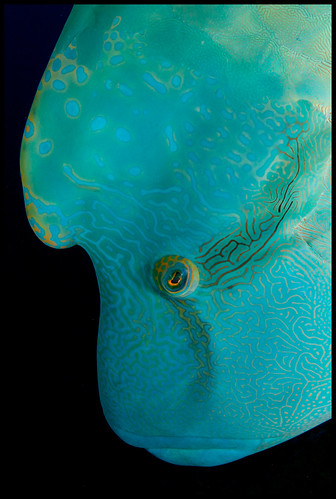
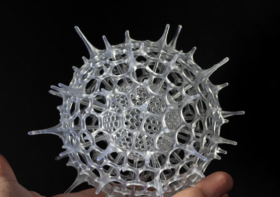
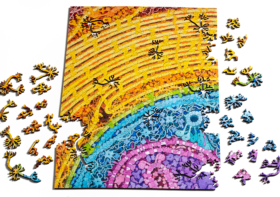

Floris Dekker
Very interesting.
Go to point 4J on this page and there is an article on how leopards & zebra’s get their skin. http://classes.yale.edu/fractals/
Don’t miss this animation ether:
http://classes.yale.edu/fractals/Panorama/Biology/Leopard/AutoSpot.gif
Joel fox
Seems like the growth of these fish would be a beautiful revelation in timelapse, though a slippery endeavor!
Madeleine FB
WOW!!!
Sam
I have only three words to say:\
I LOVE IT!!!!!!!!!!!!!!!!!!!!!!!!!!!!!!!!!!